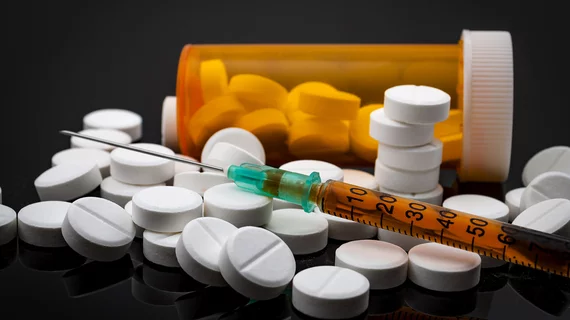Endocarditis from drug use produces ‘substantial’ economic burden
A new study analyzed the “substantial” cost burden to state and federal healthcare programs from patients hospitalized with endocarditis because of drug abuse. Findings were presented April 26 at the Society for Cardiovascular Angiography and Interventions (SCAI) 2018 Scientific Sessions in San Diego.
Researchers—led by Mark Bates, MD, of the Charleston Area Medical Center in West Virginia—analyzed patients hospitalized due to drug abuse and endocarditis. The patients had used cocaine, OxyContin, Demerol, Percocet and other opioids in large doses, according to the researchers.
The study cohort included 462 hospitalized patients with endocarditis from drug use. Endocarditis cases showed an increase from 26 in 2008 to 66 in 2015.
Due to the increase in endocarditis incidences, the researchers found a negative impact on state and federal healthcare programs. Approximately 10 percent of the endocarditis patients were uninsured. Additionally, the researchers noted approximately 11 percent of cases were underinsured by federal-level healthcare programs, and 56 percent were underinsured by state-level healthcare programs.
Throughout the almost decade-long study period, $17.3 million was billed to the hospital, though total reimbursement was only $3.8 million. The researchers said in 2015, alone, hospitals listed $3.5 million to care for endocarditis patients.
The CDC estimates drug addicts with endocarditis are 10 times more likely than other patients to die or require surgery within months of initially leaving the hospital.
“Endocarditis is a serious, hard to treat condition that significantly increases one’s risk of death,” Bates said. “We are working as a team to help find solutions for communities to combat the spread of pandemics and increase awareness in our cities about the dangers of opioid use and the life-threatening condition of endocarditis.”

